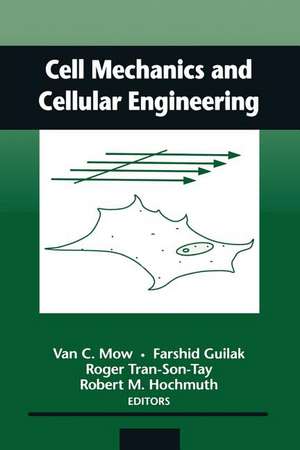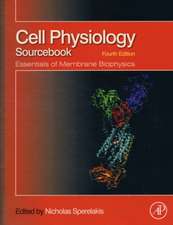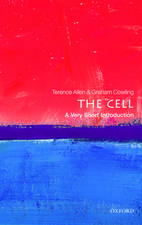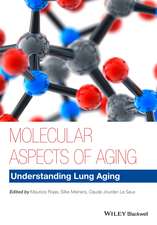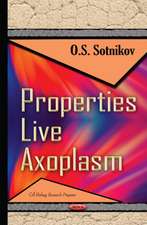Cell Mechanics and Cellular Engineering
Editat de Van C. Mow, Farshid Guilak, Roger Tran-Son-Tay, Robert M. Hochmuthen Limba Engleză Paperback – 7 noi 2011
Preț: 903.80 lei
Preț vechi: 1102.20 lei
-18% Nou
Puncte Express: 1356
Preț estimativ în valută:
172.93€ • 180.58$ • 142.81£
172.93€ • 180.58$ • 142.81£
Carte tipărită la comandă
Livrare economică 16-30 aprilie
Preluare comenzi: 021 569.72.76
Specificații
ISBN-13: 9781461384274
ISBN-10: 1461384273
Pagini: 588
Ilustrații: XVII, 564 p.
Dimensiuni: 155 x 235 x 31 mm
Greutate: 0.81 kg
Ediția:Softcover reprint of the original 1st ed. 1994
Editura: Springer
Colecția Springer
Locul publicării:New York, NY, United States
ISBN-10: 1461384273
Pagini: 588
Ilustrații: XVII, 564 p.
Dimensiuni: 155 x 235 x 31 mm
Greutate: 0.81 kg
Ediția:Softcover reprint of the original 1st ed. 1994
Editura: Springer
Colecția Springer
Locul publicării:New York, NY, United States
Public țintă
ResearchDescriere
Cell mechanics and cellular engineering may be defined as the application of principles and methods of engineering and life sciences toward fundamental understanding of structure-function relationships in normal and pathological cells and the development of biological substitutes to restore cellular functions. This definition is derived from one developed for tissue engineering at a 1988 NSF workshop. The reader of this volume will see the definition being applied and stretched to study cell and tissue structure-function relationships. The best way to define a field is really to let the investigators describe their areas of study. Perhaps cell mechanics could be compartmentalized by remembering how some of the earliest thinkers wrote about the effects of mechanics on growth. As early as 1638, Galileo hypothesized that gravity and of living mechanical forces place limits on the growth and architecture organisms. It seems only fitting that Robert Hooke, who gave us Hooke's law of elasticity, also gave us the word "cell" in his 1665 text, Micrographid, to designate these elementary entities of life. Julius Wolffs 1899 treatise on the function and form of the trabecular architecture provided an incisive example of the relationship between the structure of the body and the mechanical load it bears. In 1917, D' Arcy Thompson's On Growth and Form revolutionized the analysis of biological processes by introducing cogent physical explanations of the relationships between the structure and function of cells and organisms.
Cuprins
I Constitutive Modeling and Mechanical Properties of Circulating Cells.- 1. Human Neutrophils under Mechanical Stress.- 2. Viscous Behavior of Leukocytes.- 3. Shear Rate-Dependence of Leukocyte Cytoplasmic Viscosity.- 4. Cell Tumbling in Laminar Flow: Cell Velocity is a Unique Function of the Shear Rate.- II Flow-Induced Effects on Cell Morphology and Function.- 5. The Regulation of Vascular Endothelial Biology by Flow.- 6. Flow Modulation of Receptor Function in Leukocyte Adhesion to Endothelial Cells.- 7. Osteoblast Responses to Steady Shear Stress.- 8. Effects of Shear Stress on Cytoskeletal Structure and Physiological Functions of Cultured Endothelial Cells.- III Mechanics and Biology of Cell-Substrate Interactions.- 9. Kinetics and Mechanics of Cell Adhesion under Hydrodynamic Flow: Two Cell Systems.- 10. Initial Steps of Cell-Substrate Adhesion.- 11. A Cell-Cell Adhesion Model for the Analysis of Micropipette Experiments.- IV Cell-Matrix Interactions and Adhesion Molecules.- 12. Biphasic Theory and In Vitro Assays of Cell-Fibril Mechanical Interactions in Tissue-Equivalent Gels.- 13. Mechanical Load ± Growth Factors Induce [Ca2+]i Release, Cyclin D1 Expression and DNA Synthesis in Avian Tendon Cells.- 14. Cytomechanics of Transdifferentiation.- V Molecular and Biophysical Mechanisms of Mechanical Signal Transduction.- 15. Signal Transduction Cascades Involved in Mechanoresponsive Changes in Gene Expression.- 16. Cytoskeletal Plaque Proteins as Regulators of Cell Motility, and Tumor Suppressors.- 17. Mechanical Signal Transduction and G Proteins.- 18. Modeling Mechanical-Electrical Transduction in the Heart.- 19. Cellular Tensegrity and Mechanochemical Transduction.- VI Physical Regulation of Tissue Metabolic Activity.- 20. Stress, Strain, Pressure and Flow Fields in Articular Cartilage and Chondrocytes.- 21. Deformation-Induced Calcium Signaling in Articular Chondrocytes.- 22. The Effects of Hydrostatic and Osmotic Pressures on Chondrocyte Metabolism.- 23. Proteoglycan Synthesis and Cytoskeleton in Hydrostatically Loaded Chondrocytes.- 24. Altered Chondrocyte Gene Expression in Articular Cartilage Matrix Components and Susceptibility to Cartilage Destruction.- VII Mechanics of Cell Motility and Morphogenesis.- 25. Mechanics of Cell Locomotion.- 26. The Correlation Ratchet: A Novel Mechanism for Generating Directed Motion by ATP Hydrolysis.- 27. Receptor-Mediated Adhesive Interactions at the Cytoskeleton/Substratum Interface during Cell Migration.- 28. Actin Polymerization and Gel Osmotic Swelling in Tumor Cell Pseudopod Formation.- 29. Biomechanical Model for Skeletal Muscle Microcirculation with Reference to Red and White Blood Cell Perfusion and Autoregulation.
